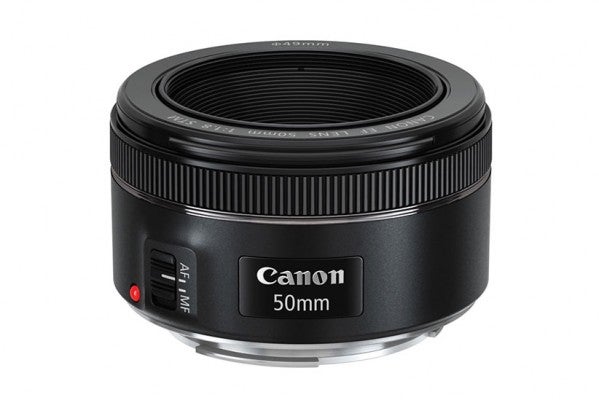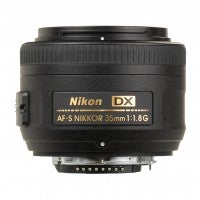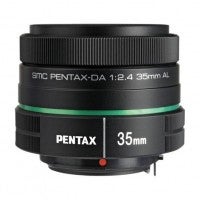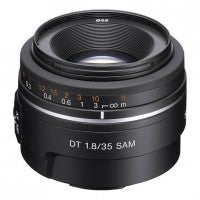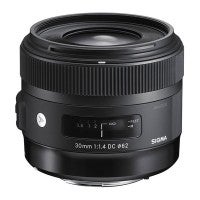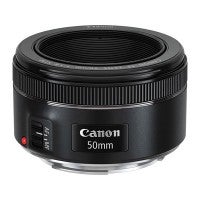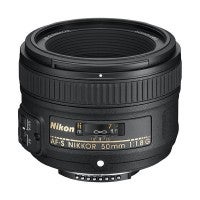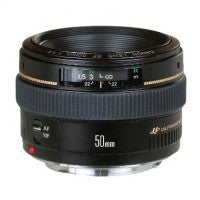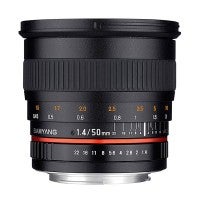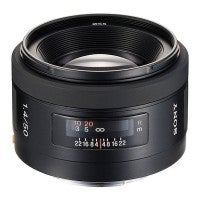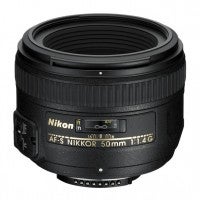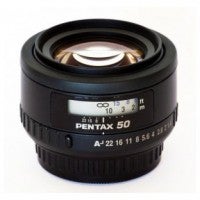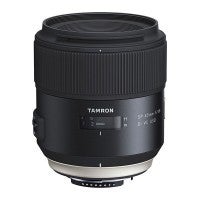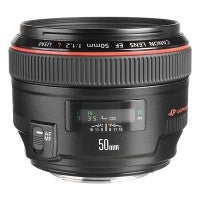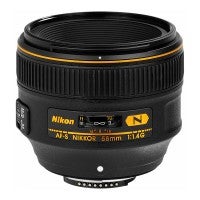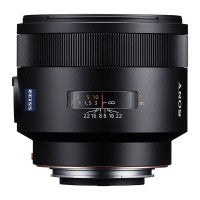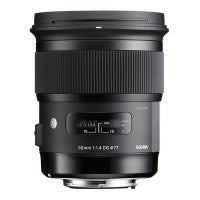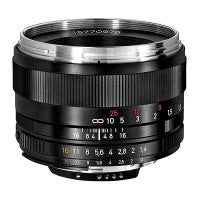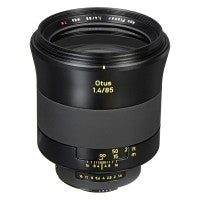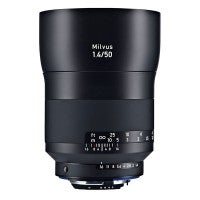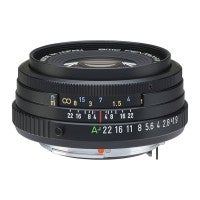One of the most versatile lens categories, 'standard' lenses are suitable for a wealth of everyday subjects, and remain a popular investment for photographers of all levels. We round up some of the best standard prime lenses for you
Standard, or normal, lenses are those whose focal length approximates the diagonal of the format for which they are designed. With the diagonal measurement of a full-frame sensor being just over 43mm, this results in SLR-specific lenses offering a focal length of around 43mm falling under this terminology. Such lenses are often said to deliver a perspective that approximates that of the human eye.
Although a handful of 43mm lenses do exist, most manufacturers round things up to 50mm for their ‘standard’ offerings. There are also a number of equivalent lenses specifically designed for APS-C-sensors, although given the crop factor of these bodies, the lenses need to be shorter to compensate for this; lenses with a focal length around 30-35mm result in an equivalent angle of view on such cameras.
As ‘standard’ lenses, these are suitable for a wealth of everyday subjects; a quick Google Images search will show you just how versatile these can be. Portraits, specifically environmental portraits and head-and-shoulder shots, are a classic application, although these lenses are also embraced by street, nature, documentary and travel photographers, and, less commonly, used for landscapes and architecture too.
Not only does their focal length allow them to have a fairly simple construction, but it also facilitates a relatively wide aperture. A maximum aperture of f/1.8 is common for even basic versions of these lenses, so by spending a little more you will typically gain a wider f/1.4 aperture, if not wider. Other things to look out for are rounded aperture blades for pleasingly circular out-of-focus highlights, as well as weather resistance and the use of superior lens coatings. Those using filters such as polarisers are also advised to seek out lenses whose front does not rotate when focusing.
Here is our pick of current standard prime lenses.
Best standard prime lenses – APS-C
Nikon 35mm f/1.8 G AF-S DX
This compact and affordable 35mm lens is ideal for users of all DX bodies on account of its Silent Wave Motor, which ensures it will autofocus on cameras that lack their own motors. It delivers an effective focal length of around 52.5mm on a DX-format DSLR, which suits it to portraiture, street photography, nature and more.
Pentax 35mm f/2.4 SMC DA AL
Not quite as wide a maximum aperture as rival options but with a temptingly low price, this Pentax 35mm lens has been primed with Super Multi Coatings for better light transmission and has a tactile focusing ring at the end of its barrel. Its effective focal length is roughly equivalent to 52.5mm on APS-C-format Pentax bodies.
Sony 35mm f/1.8 DT SAM
The ‘SAM’ in the title in this 52.5mm-equivalent lens denotes the use of a Smooth Autofocus Motor, which is said to bring responsive and fluid operation, while the 23cm focusing distance allows for closer focusing than most other similar optics. A seven-bladed circular aperture also features, helping to deliver circular out-of-focus highlights.
Sigma 30mm f/1.4 DC HSM
Available for Canon, Nikon, Pentax, Sigma and Sony users, this APS-C-specific optic in Sigma’s Art line has a wide f/1.4 maximum aperture as its main draw, together with a Hyper Sonic Motor, a rounded diaphragm and an effective focal length equivalent 45mm on 35mm terms (48mm on Canon bodies).
Best standard prime lenses – Full frame
Budget
Canon EF 50mm f/1.8 STM
A relatively recent update on Canon’s most junior 50mm offering, this lens incorporates “near-silent” Stepping Motor technology that promises snappy focusing for stills and smooth focus action when using it for video recording.
Nikon 50mm f/1.8 G AF-S
Although Nikon still carries a D version of its 50mm f/1.8 lens, this G-version alternative boasts a weather-sealed metal mount and an aspherical element in its optical construction. With the further benefit of a Silent Wave Motor, this optic will also autofocus on Nikon’s DX-format bodies that lack their own, such as the D3300.
Mid-range
Canon EF 50mm f/1.4 USM
This may not be the newest of options here, but you’d be hard pushed to find another f/1.4 full-frame compatible optic at such a low price. Canon cites this as a fitting choice for travel, portraits and reportage, with its eight aperture blades promising a virtually circular diaphragm.
Samyang 50mm f/1.4 AS UMC
Designed for Canon, Nikon and Sony A-mount users, this manual-focus-only option from Samyang has a hybrid aspherial element and multi-layered coatings on the inside, together with focused-distance markings on its barrel. Not quite as cheap as Canon’s f/1.4 version although more affordable than Nikon’s.
Sony 50mm f/1.4 AF
Keenly priced and with a smart, minimal design, this wide-aperture lens has seven circular diaphragm blades on the inside, together with a focused-distance window on the barrel. It also has the advantage of a non-rotating front, which makes it more suitable for use with certain filters.
Nikon AF-S 50mm f/1.4G
This is an affordable step up from the f/1.8 version (or older D optics) for those after particularly shallow depth of field, or who frequently find themselves shooting in low-light conditions. It sports a ring-type Silent Wave Motor and nine-bladed diaphragm, as well as full-time manual-focus override for post-autofocus fine-tuning.
Pentax 50mm f/1.4 SMC FA
As its design will attest this lens has been around for quite some time, although with the recent arrival of the full-frame K-1, it may well enjoy a resurgence in popularity. Features include Super Multi Coating and a non-rotating front, the latter of which should please those intending to use it with polarisers.
Tamron 45mm f/1.8 SP Di VC USD
Recently launched alongside a similar 35mm alternative, and with the significant benefit of Vibration Compensation over rival lenses, this handsome objective boasts a deep focusing ring, an Ultrasonic Silent Drive motor and a moisture-resistant construction. It’s available for Canon, Nikon and Sony users, the latter without Vibration Compensation on account of image stabilisation already being present in Sony bodies.
Pro
Canon EF 50mm f/1.2L USM
With its super-wide f/1.2 aperture this is a fairly hefty optic, although it’s Canon’s prime 50mm choice. The barrel offers and dust and moisture resistance, while Super Spectra Coatings promise to keep light transmission high and flare and ghosting low.
Nikon 58mm f/1.4 G AF-S
Announced towards the end of 2013, this pro-grade Nikkor offers a slightly longer 58mm focal length than most of the other options here, and on a DX body delivers a useful effective focal length equivalent to around 87mm in 35mm terms. Two aspherical elements aim to keep aberrations low while nine rounded diaphragm blades promise to keep bokeh natural. Nano Crystal Coat technology and a Silent Wave Motor also feature.
Sony Carl Zeiss Planar T* 50mm f/1.4 ZA SSM
Inside this optic’s dust- and weather-resistant body lie two aspherical elements to combat aberrations, as well as a rear-focusing system that keep the barrel length constant while focusing. The further inclusion of a nine-blade circular diaphragm should also make it appeal even more to portrait shooters.
Sigma 50mm f/1.4 DG HSM
This recent addition to Sigma’s Art stable may not be the most compact or affordable of 50mm f/1.4 options, but it’s difficult to think of another lens that’s been so coveted and universally praised in recent years – at least at this price. Available for Canon, Nikon, Sony and Sigma users, with internal focusing, a Hyper Sonic Motor and compatibility with Sigma’s USB Dock for performance maintenance.
Zeiss 50mm f/1.4 T* Planar ZE / ZF.2
Available in Canon and Nikon fits, this manual-focus Zeiss lens has a sturdy metal mount and a tactile focusing ring on the outside to recommend it, together with a nine-bladed aperture and T* coatings on the inside. The Planar is a classic double Gauss optical design so it’s relatively compact, but it does have the knock-on effect of being less sharp at f/1.4.
Zeiss 55mm f/1.4 T* Otus ZE / ZF.2
This recently released lens has been frequently pit against the Sigma 50mm f/1.4 DG HSM, and while it’s already developed a reputation for excellence, its price tag and lack of autofocus has discouraged some. Still, when quality is key, this is very much as good as it gets. The Otus line is a no-holds-barred optical design, offering the absolute best performance of the Zeiss range, though this does come hand in hand with a very high pricetag.
Zeiss 50mm f/1.4 Milvus ZE / ZF.2
Another new lens from Zeiss, sharper than the Planar and significantly cheaper than its Otus cousin, the Milvus manual-focus optic for Canon and Nikon users has been designed with a floating system to ensure correction over aberrations across the focusing range, as well as environmental protection.
Pentax 43mm f/1.9 FA Limited
This mostly metal lens boasts a compact design and an aperture ring, as well as markings to indicate focused distance. It’s ideally partnered with the full-frame K-1, or older film bodies, although on an APS-C body it delivers a still-useful effective focal length equivalent to 64.5mm in 35mm terms.





